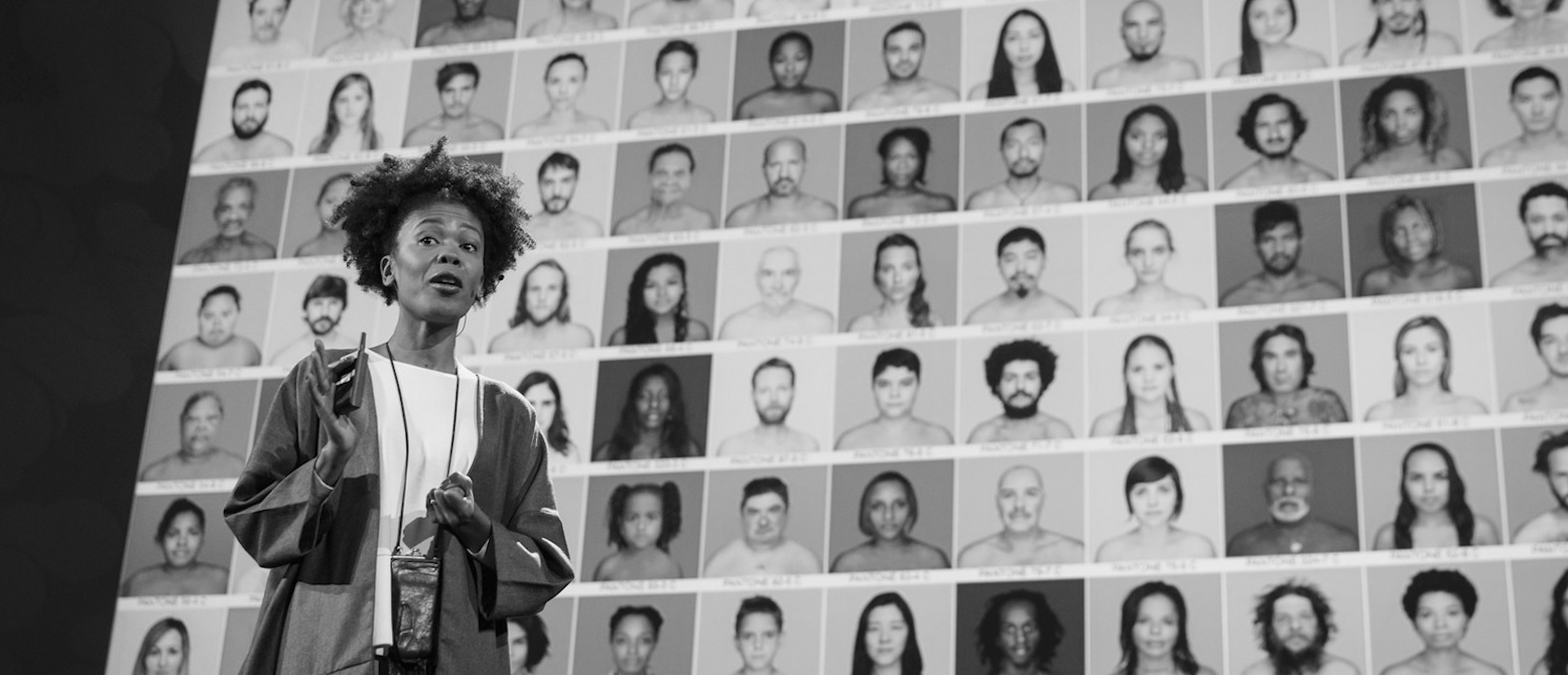
1 de Abril de 2025
Explora Artículos The Human Palette
junio 12, 2017 9 min
A lack of human diversity is a serious limitation when a company’s competitiveness is no longer just a matter of securing the control of valuable, rare, inimitable and non-substitutable resources.


Angélica Dass is a Brazilian artist, born into a family “full of colours”, where racial identity was never an issue. Despite this, throughout her childhood she experienced racial stereotyping, being mistaken for a maid many times. She draws from personal experience, making art out of people’s preconceptions of color. Her Humanae project is “a chromatic inventory of human skin tones.”
Dass is taking portraits of thousands of volunteers from around the world. She photographs them against a white background, selects an eleven-pixel square from the subject’s nose, replaces the white background with the color of that square, and finally names each portrait with the corresponding code in the Pantone palette. The outcome, which the artist regards as “work in progress”, is a continuum made of hundreds of skin tones that reminds us both of our uniqueness and our shared humanity. Studying the beautiful images that make up this color mosaic, one is struck by the variety and richness of the human being. If a variable as simple as skin tone throws up hundreds of different shades, how many unique varieties of human beings can we discern by combining all the possible values of all the many variables that make up a person?
Back in the corporate world, this line of thought reveals how simplistic most employee diversity programs are, and what many organisations might be missing as a consequence. There is a growing sensitivity towards workforce diversity, with more and more organisations putting in place programs and protocols to encourage it. Few managers today dare to deny –at least officially- that diversity is a factor that positively influences both the innovativeness and adaptability of organisations; two capacities which, in turn, greatly influence the competitiveness of a company in today’s volatile, uncertain, complex, and ambiguous environment. However, closer scrutiny of these diversity and inclusion programs shows up their limitations, as most of them only take into account a few of the many variables that define mankind’s diversity.
Many companies painstakingly hire a similar number of men and women, and make sure ethnics minorities are adequately represented. But closer analysis reveals that the cultural, educational, and professional backgrounds of those individuals (and more profoundly, their beliefs and motivations at work) are not so diverse. A homogeneity that becomes more evident, and much more disturbing, when we focus on the higher ranks of those organisations. What credibility can their diversity, equality, and inclusions have if the leaders look and act as clones? Let’s consider cultural diversity. Many business leaders proclaim they want a variety of cultures to be represented inside their organisations. Undoubtedly, this makes a lot of sense in a world where increased cross-border investments, international trade, technological connectivity, remote work, and migrations have heightened interactions between people of different cultures. When cultures mix and collide like this, societies –and markets- become more complex, and cultural differences are less obvious than before.
But in practice things are different: only a small number of multinationals are managed by executive of a nationality different from their organisation’s country of origin. Many corporations behave as if cultural differences were no longer relevant, as if the same patterns of conduct and communication can work anywhere. And, in general, organisations place very little importance on cross-cultural competence when they assess their candidates. Generational differences are another blind-spot for corporate diversity and inclusion programs. A lack of diversity is a serious limitation when a company’s competitiveness is no longer just a matter of securing the control of valuable, rare, inimitable and non-substitutable resources. What matters to organisations now is being able to renew capabilities, adapting, integrating, and reconfiguring internal and external organisational skills, resources, and functional competences to match the requirements of a volatile, uncertain world. The challenge is to overcome simplistic solutions and learn how to optimise the mix of different personal profiles present in the workforce.
Image: TED Conference under a Creative Commons License
¿Te ha gustado?
¿Ya eres usuario? Inicia sesión aquí